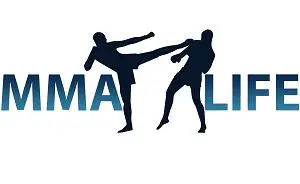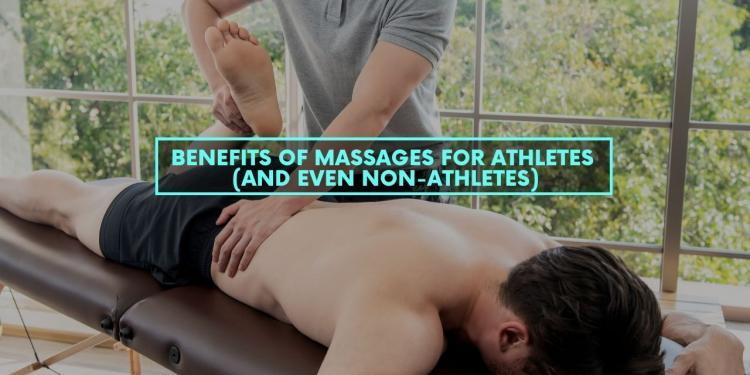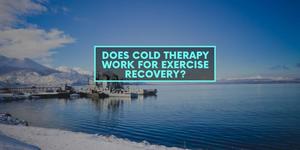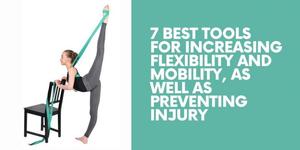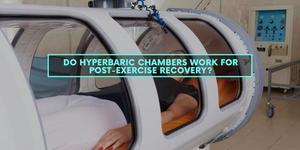Sure massages feel good. But if you are physically active, you want a massage to does more than just make you feel good right? You want it to aid in your performance as an athlete and in your recovery. In this article, we will be going over the science of massages, and why people who are physically active need to seriously consider including as regular part of their routine.
Why Massages Are Good For Those Who Are Physically Active
Scientifically, massages affect the nervous system and trigger parasympathetic system. But what exactly does that mean? The parasympathetic system is your "rest and digest" system, the opposite of the sympathetic system. The idea is that in order to increase recovery of athletes, we need to increase the activation of the parasympathetic system.
Experts in the field of sport medicine have long known that the constant push-and-pull of stress and relaxation of the muscles have been the key to peak growth in athletic performance. That is, you stress the muscles out but also need to relax it in order to foster growth. And the faster you can relax the muscles after stressing it, the faster you will be able to stress it again. In other words, the faster you can return to baseline levels, the better you are able to handle repeated stresses of training. Thus, sending signals via massages to the parasympathetic system is paramount to this goal.
Again, this is the theory behind why massages are great for those who are physically active. But the next section will get into specific benefits of massages, and also talk about some clinical studies showing their efficacy.
The Specific Benefits of Massages, Backed By Science
So we just talked about theory and we also know that massages feel extremely good; but what can it do for you from a health standpoint? Here are some of the specific benefits of massages, laid out by different clinical studies.
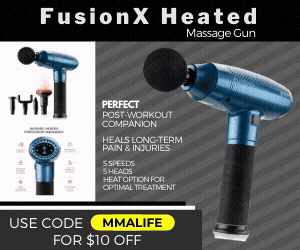
Reduce Inflammation
A study involving 11 men showed that massages reduce inflammation of the muscles via biopsies. After exercising, your muscles become acutely inflamed through because of increased production of inflammatory cytokines TNF-6 and IL-6. In the study, the 11 men were given massages as a recovery tool. Before the massage, biopsies were taken of the subjects. After the massage, biopsies were taken again and compared to the first biopsy. The second biopsy showed a reduction in the production of the pro-inflammatory cytokines. The biopsies also showed the production of new mitochondria---which means that more energy is added to those muscle cells, thereby improving their function.
This study only involved 11 men and further studies are needed to confirm the results. But the fact that the 11 biopsies all showed a reduction of pro-inflammatory response is pretty amazing.
Improves Flexibility and Range of Motion
A new study from 2019 showed that foam rolling (a form of self-massage) offered improvement in flexibility and sprint performance. The point of foam rolling is to release tight muscles, tendons, and ligaments. This thereby allows you to increase range of motion by loosening the fascia. A 2008 study also showed that massage therapy helps with increasing range of motion of patients with back pain, and even helping alleviate sciatica. A 2017 study showed that massage therapy increased range of motion in those with shoulder problems, especially flexion and abduction.
Helps With Myofascial Pain Syndrome
Deep-pressure massage focused on myofascial (muscle and fascia) trigger points - those localized areas in the skeletal muscle where pain is highly concentrated - is effective in relieving that pain, according to scientific research. A 2018 study published in the American Journal of Physical Medical Rehabilitation affirmed the efficacy of massage on myofascial pain in 62 subjects.
The participants underwent 45-minute sessions of massage therapy twice per week for 6 weeks. The massages targeted myofascial trigger points, and researchers quantified the results based on increases in subjects' pressure-pain thresholds.
Results showed an immediate increase in test subjects' PPTs as well as a sustained increase over the course of the study. Researchers also found that the capacity of PPTs is expansive and continues to increase even after multiple massage therapy sessions.
Ease Anxiety
Massage therapy is just as effective in lessening the symptoms of anxiety as other complementary and alternative therapies, as shown by several scientific studies. One massage therapy study conducted by Sherman et. al. in 2010 focused on 68 subjects diagnosed with General Anxiety Disorder.
Researchers used the Hamilton Anxiety Rating as a guide to measuring the reduction of anxiety in these participants. The results showed that massage lowered anxiety as effectively as the control treatments of thermotherapy and relaxing room therapy.
Massage therapists customized their treatments to suit each individual patient, but each session consisted of the myofascial release of targeted muscle groups in the shoulders as well as the cervical, thoracic, lumbar and sacral sections of the spine. Therapists encouraged participants to practice deep breathing techniques during their massage therapy sessions.
Researchers looked at patient outcomes at both 12 and 26 weeks, finding a marked decrease in patient anxiety. They found that rates of remission at 26 weeks were low.
Aid in Digestion
In a 2009 study, researchers investigated the belief that massage therapy can help with digestive disorders. "Effects of abdominal massage in management of constipation" sought scientific verification that massage could ease constipation.
One-half of the 60-person sample group received abdominal massage and a laxative while the other half took the laxative only. Researchers measured each person's gastrointestinal function at the start of the study and then again at four and eight weeks.
They concluded that therapeutic abdominal massage made a significant difference in easing test subjects' digestive difficulties. It decreased the symptoms of constipation and abdominal pain. The study showed that, in combination with laxatives, abdominal massage is an effective therapy for constipation.
Headache Relief
Tension-type headaches are headaches associated with myofascial pain. They are grounded in trigger points and/or contractions in the neck and shoulder muscles. A research study described in the October 2002 American Journal of Public Health evaluated the benefits of therapeutic massage in relieving tension headaches.
The test group included ten 18-55-year-olds who suffered from at least two chronic tension headaches per week for at least six months. Each individual underwent two 30-minute massage sessions per week for four weeks and kept a headache diary.
Each session consisted of a three-minute warm-up, five minutes of myofascial release, two minutes of axial cervical traction and 15 minutes of directed trigger-point therapy. The certified massage therapists ended each session with five minutes of stretching and then three minutes of closure.
As a result, researchers found a consistent reduction in the number of weekly tension headaches experienced by test subjects. Numbers decreased from an average high of 6.5 weekly headaches at the outset of the study to an average of 1.5 per person after the four weeks of massage therapy. The duration of the headaches also significantly decreased.
Best Type of Massages for Physically Active People
There are many distinct types of massages. And while all massages feel good, the types of massages best for athletes are ones targeting specific muscles and penetrating deep to break up knots.
If you are looking to do your own massages, go down and read our section on the best tools for self-massage (self-myofascial release). It is a much cheaper option. But if you are having a professional massage, these types of massages are the best for you.
Thai Massage: A thai massage is not a relaxing massage in any sense of the word. But damn, do you feel good after. A Thai massage is sometimes called the "lazy person's massage." Want to know why? The masseuse will be stretching, pulling, and rocking you during the massage. In addition to the hands, the masseuse will also use elbows and knees to massage you.
Shiatsu Massage: A Shiatsu is a gentler massage developed in Japan. The masseuse will use their fingers and palms to apply deep pressure to specific points of the back.
Trigger Point Massage: A trigger point massage seeks to identify the originating (trigger point) site of a painful muscle tissue and works that trigger point to alleviate the pain site. The trigger point and site of the pain or ache will not always be the same site.
Deep Tissue Massage: Deep tissue massages are one of the more common massage types found at massage spas. It uses firm and deep massage strokes to get down to the deeper layers of muscle tissues and fascia. The purpose of the deep strokes is to break down "knots" in the muscles and fascia.
Sports Massage: A sports massage is a technique that borrows from many other massage styles to tailor the massage to those who are physically active. The goal of a sports massage is improving range of motion, reducing muscle inflammation, and improving healing time. A sports massage is usually done right before or after physical activity and is usually directed towards the body parts that is use most often in your athletic endeavors.
Of course, the problem with all these types of massages is that it requires someone else and so if you live in a developed country, it can add up quick. The good news is that you can get a therapeutic massage without the hefty price tag of a masseuse. Self-massagers have come a long way from a decade ago and there are now plenty of options for you when it comes to self-myofascial release. It really all depends on your preferences and budget.
Massages Don’t Have to Be Expensive: Different Options for Self-Massage
If you are rich, then you can afford to shell out hundreds of dollars a week for massages by a massage therapist. But most people do not have that kind of money. Thankfully, getting a massage doesn’t have break the bank, thanks to a variety of massage tools out there that cater to athletes. Giving yourself a massage (self-myofascial release) is much cheaper option.
1. Lacrosse Ball
A simple lacrosse ball costs less than $10 and will work fine as a massage tool. The surface of a massage ball is even and provides the perfect density to give an invigorating massage. In order to use a massage ball as a massage tool, you will need a flat surface (such as a wall, floor, or chair) in order to roll the ball against your muscles.
Pros
Cons
Conclusion
A lacrosse ball is a good option if you want to attack small areas such as shoulders or just want something to carry with you on-the-go. However, it is not the best option if you want to attack bigger muscle groups or to vary up the intensity of your massage.
2. Foam Roller
Foam rollers are the next cheapest option but can vary widely in pricing, depending on size, density, and technical specifications. A vibrating foam roller will be more expensive than a regular foam roller. For a deeper massage, try picking dense rollers.
Pros
Cons
Conclusion
A foam roller is something everyone should have because it is a cheap and efficient way to massage large muscle groups. Invest in a dense one to really get the knots out.
3. Percussion Massagers
Percussion massagers are all the rage right now in sports therapy. These percussive massage machines provide immense pressure (via percussion) in order to break up tight muscle and fascia. Most percussive massagers will be in a shape of a jigsaw. However, a derivative of massage guns exists, such as percussion massage wands. Go here for a review of our favorite percussion massagers
Pros
Cons
Conclusion
A percussion massager is a great tool to add to your arsenal if you are serious about peak performance but don't have the money to splurge on a masseuse every week. It provides great targeted relief and has pressure deep enough to get out the most stubborn knots.
4. Cold/Hot Massage Roller Ball (Cryosphere)
If you have been paying attention to sports therapy, you might have seen these. The theory is that combining cold therapy and massage therapy into one tool would ensure faster recovery time. Cold therapy has been used by elite athletes for decades to recover. These balls are very portable, being only slightly larger than a baseball.
Pros
Cons
Conclusion
A cold massage ball is an interesting concept that combines two proven therapies in order to aid people in athletic recovery. This is cheap enough that it is affordable enough for anyone who already has a gym membership and should be in the inventory of anyone who is physically active.
The leader in the game for cryospheres is Recoup, who have brand embassadors such as NFL pro Brandon Marshall and Olympic Bronze Medalist Lauren Sessleman.
5. Muscle Scraper
Muscle scraping has been used by many Asian countries for many centuries but have recently just begun to be used by sport therapists in the West. It is the method of repeatedly scraping the skin with moderate pressure in order to loosen the soft tissue and promote blood flow to the regions. Although scraping has been done for quite a long time, it just has recently picked up steam in the West. Two popular terms you will hear in relation to muscle scraping is "gua sha" and "graston method", which are similar types of muscle scraping methodology. This method of myofascial release is one of the more painful ones. However, you should not feel immense unbearable pain while doing it.
If you are going to buy muscle scrapers, be sure to also buy the ointment too. The oilment should be applied before scraping. We recommend buying this kit if you want to get started.
Pros
Cons
Conclusion
A cold massage ball is an interesting concept that combines two proven therapies in order to aid people in athletic recovery. This is cheap enough that it is affordable enough for anyone who already has a gym membership and should be in the inventory of anyone who is physically active.
The leader in the game for cryospheres is Recoup, who have brand embassadors such as NFL pro Brandon Marshall and Olympic Bronze Medalist Lauren Sessleman.
